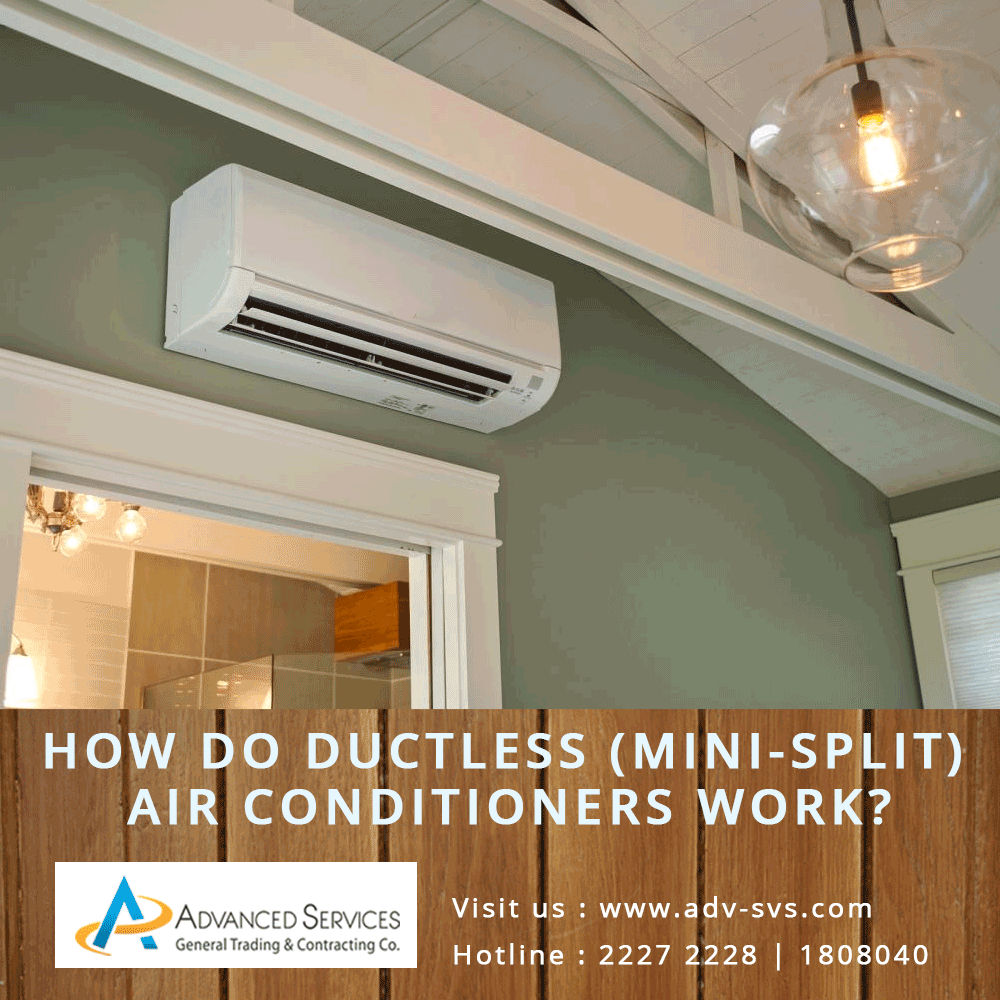If you are on the search for an alternative to traditional cooling systems, try ductless air conditioners (also known as mini-splits). These contemporary systems bring energy savings and higher levels of efficiency for cooling your home. The ground-breaking design doesn’t have the ductwork, but it will keep your home cool and your energy bill down when installing properly. Of course, you should have some idea of how the Ductless AC work.

How Ductless Air Conditioners Work
Ductless AC’s doesn’t need
How the Room Cools
Ductless air conditioners work almost similar to the same traditional systems. Mini-split systems can achieve the same cooling effects without the need of ductworks and additional electrical components. The outdoor unit drives air into the unit’s refrigerant to cool. The internal fan distributes the cool air internally.
Elements of Ductless Air Conditioners
Because it’s a ductless system, mini-split unit consume only a little space in your home. You might be thinking how the ductless system got the name as mini-splits, this is because the unit has only two components.
– An internal component containing a fan, which is installed on an interior wall, near the ceiling in the cooling zone
– An external compressor unit place on a concrete slab outdoors
Copper lines connect the external and internal units through drilled holes in the wall. The indoor unit is powered through the external unit, rendering additional internal wiring unnecessary.
The Advantages
When mounted properly by a capable contractor, mini-splits can bring these advantages:
Small size:
This one might seem a bit obvious, but did you know that many models have one outdoor unit with up to 4 indoor units? You can adjust the number of units according to the zones you need to manage.
Energy savings:
In the extreme summer, it’s hard to resist playing with the thermostat. In some homes, there is just one thermostat per floor, and it results in the release of air to the unwanted space creating higher energy bills. With mini-splits models, you will have thermostats for each zone, so you can direct the air conditioning to the spaces you’re occupying. And by directing the cool air only to the occupied spaces you actually are saving a lot of energy, which also means lower energy costs.
Customizable conduits:
Most ductless air conditioner manufacturers offer a variety of conduit lengths. That means you can put your outdoor unit far away from your indoor evaporator. If you want to hide your outdoor unit in a particular spot, your manufacturer might be able to make it possible. When it comes to curbing appeal, hiding your external air conditioning unit can make a big difference.
Easy to install
Ductless air conditioners are incredibly easy for trained professionals to install and that means you can have your project done in no time. In fact, for the connection between internal and external units, the installer only has to make a three-inch hole for the conduit. You can choose a showcased unit to minimize the need for ductwork or go for the hidden option for subtler temperature control.
Minimize the use of ducts
As the name suggests, ductless air conditioners don’t have ducts, which means they aren’t susceptible to the same types of energy loss associated with traditional central-forced air system ductwork. Especially when ducts are not insulated well, duct energy loss can account for a third of energy consumption for air conditioning units.
Flexible design
For the indoor components, you have the option to suspend them from the ceiling, flush them into a dropped ceiling or hang them on the wall. If you so desire, you can also opt for a floor-standing model.
Sleek and high-tech:
Indoor units are usually about seven inches deep and come with high-tech jackets. Many systems can be remote control operated, which is best for suspended or otherwise hard to reach placements.
Extra security for homes
At least with through-the-wall, window-mounted air conditioner units, you run the risk of having an open portal into your home. Mini-splits require just a three-inch hole, which minimizes the security risk.
Now that you know what you can expect from a ductless air conditioner unit, you probably have a better idea of whether or not this is the best solution for you. If you have any questions, speak with your local home improvement associate.
When you want to have your AC installed in your home in Kuwait, you can depend on the service of Advanced Services the leading HVAC provider in Kuwait. They are specialized in all forms of HVAC works such as the installation, repair, service,
